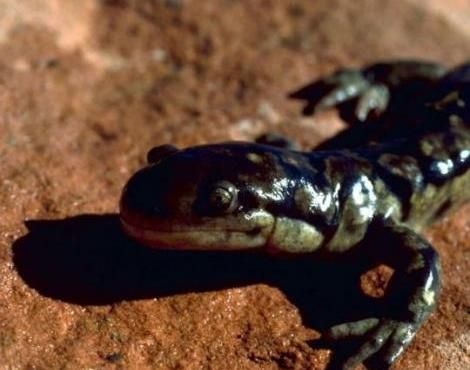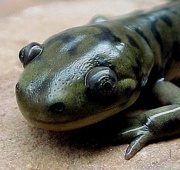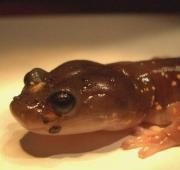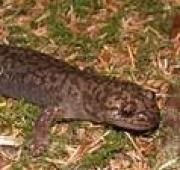
A salamander is an amphibian that has four legs, a long and slender body and a long tail. Despite their lizard-like appearance, salamanders are most closely related to the smaller amphibious lizard, the newt.
Salamanders are found all over the world generally in more temperate climates. All species of salamander are aquatic or semi-aquatic due to their amphibious nature and permeable skin. The moist skin of the salamander means that the salamander inhabits aquatic regions or wetlands.
There are more than 700 different species of recognised salamander worldwide from the smaller species of newt to the Chinese Giant salamander which can grow to nearly 2 meters long. All species of salamander look very similar in appearance but as with lizards, different species of salamander can have less limbs than normal meaning that some species of salamander have a more eel-like appearance.
In a similar way to newts and lizards, the salamander is remarkably able to regenerate and regrow lost limbs and sometimes other body parts too. This gives the salamander an advantage when being hunted by predators as the salamander is able to drop body parts and escape.
Most species of salamander are brightly coloured, particularly the male salamanders during the breeding season, when their colours become brighter and more intense in order to try to attract a female. Those species of salamander that live underground are often either white or pink in colour due to the fact that their skin is never exposed to the sun.
The skin of salamanders secretes mucus, which helps keep the animal moist when on dry land, and maintains their salt balance while in water, as well as providing a lubricant during swimming. Salamanders also secrete poison from glands in their skin, and some additionally have skin glands for secreting courtship pheromones.
Salamander population numbers have been dramatically decreasing possibly due to levels of fungus that is increasingly present in the water. It is unknown as to whether or not this is the reason for the decreasing salamander numbers but pollution levels are also thought to have played a big part.



| Kingdom: | Animalia |
| Phylum: | Chordata |
| Class: | Amphibia |
| Order: | Caudata |
| Family: | Salamandroidea |
| Scientific Name: | Caudata |
| Type: | Amphibian |
| Diet: | Carnivore |
| Size: | 2-180cm (0.8-71in) |
| Weight: | 0.1-65kg (0.2-143lbs) |
| Top Speed: | 42km/h (30mph) |
| Life Span: | 5-20 years |
| Lifestyle: | Solitary |
| Conservation Status: | Threatened |
| Colour: | Brown, Green, Black, Yellow, Red, White |
| Skin Type: | Permeable Scales |
| Favourite Food: | Fish |
| Habitat: | Rainforest, streams and wetlands |
| Average Litter Size:
The average number of babies born at once...
|
300 |
| Main Prey: | Fish, Mice, Insects |
| Predators: | Fish, Snakes, Birds |
| Special Features: | Flattened head and body and small eyes |



